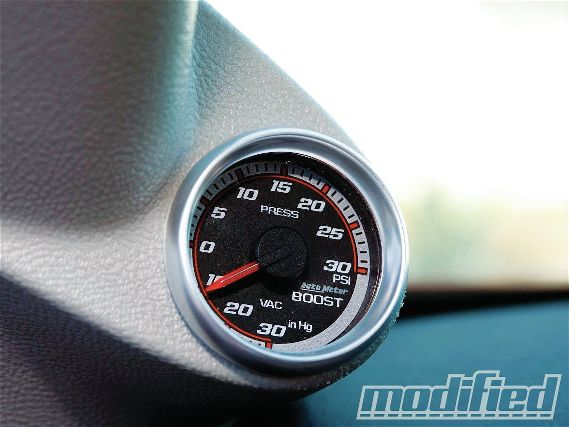 Turbo Renaissance - Tech Talk
Turbo Renaissance - Tech Talk
Send your feedback to [email protected]
Everything old is new again, and just like during the early ’80s, turbocharging has found its way to the forefront of engine technology as a way of improving fuel efficiency. I half expect Michael J. Fox to make another Back To the Future movie the way things are going these days, what with everyone from Ford and GM to Hyundai and BMW jumping on the smaller-displacement turbocharged engine bandwagon.
 |
Turbo Renaissance - Tech Talk
|
Turbo Renaissance - Tech Talk
When turbocharging took off in the early ’80s, it was due to a fuel crisis, not unlike the one we’re experiencing these days. Back then, it was turbo 4-cylinder Ford Mustangs and Thunderbirds, Dodge Shadows and Daytonas, and the still-popular (with the mullet crowd) V-6 turbo Buick Grand National. It wasn’t just the domestics using turbos to squeeze better performance out of smaller and more fuel-efficient engines, though — the Germans (Audi) and Swedes (Saab and Volvo) were also going at it with their 5-cylinder turbo engines. And, of course, there were high-performance turbo models from Porsche, Nissan, Mitsubishi and Mazda, to name a few.
Small-displacement turbocharged engines are once again emerging as the most effective way to improve combustion engine fuel efficiency, and the power being produced by these engines ain’t too shabby, either. Ford’s EcoBoost engines are impressively powerful and fuel efficient, GM’s new 1.4-liter 138hp turbo-4 is being used in a wide variety of small car platforms, and Hyundai’s 2-liter Theta II turbo-4 already has a strong market presence in the Sonata and Genesis coupe. Even Honda, the king of highly efficient, naturally aspirated 4-cylinder engines is jumping on board with a turbocharged replacement for the K-series, and rumor has it a 1.6-liter turbocharged CR-Z high-performance model may be coming down the pipe for 2012 (yes, please!).
The question is, what exactly has changed since the ’80s that makes turbocharging a better strategy than it proved to be back then? And how exactly do turbos improve fuel economy? In the ’80s, it was the tendency of turbo engines to self-destruct because of high heat and cylinder pressure, not to mention annoyances like turbo lag and torque steer, that led most automakers to return to naturally aspirated engines (easing fuel prices also played a role). But before throwing in the towel, carmakers tried to solve the reliability issues of ’80s turbocharged engines with intercoolers (which added weight, complexity and manufacturing cost), lower compression pistons (which reduced torque and throttle response), and adding more fuel to the mixture (which reduced fuel efficiency and increased emissions). They also used shorter gear ratios and higher final drives to mask the effects of turbo lag and lower engine compression, but this also reduced fuel efficiency since the engine was spinning at higher rpm at cruising speeds. Electronic engine management was also very primitive at this time, so controlling a relatively complex turbocharger system with any kind of precision was also missing.
 |
Boost pressure to the rescue? The new breed of small-displacement turbocharged engines deliver impressive fuel efficiency without any of the reliability and driveability problems that plagued turbo cars in the ‘80s and ‘90s.
|
Boost pressure to the rescue? The new breed of small-displacement turbocharged engines deliver impressive fuel efficiency without any of the reliability and driveability problems that plagued turbo cars in the ‘80s and ‘90s.
These days the picture is very different. Engine management is highly advanced, and with the addition of knock sensors, direct fuel injection, variable valve timing and 6-speed transmissions, we may just be entering a golden era of turbocharged engines. And let’s not overlook turbochargers themselves, which have advanced tremendously with regards to bearing friction, compressor and turbine designs, and (like the Acura RDX engine) even variable geometry.
As a result, this new breed of small-displacement turbocharged 4-banger is equipped with oil-cooled and relatively high-compression ratio pistons (for better off-the-line torque and throttle response), direct fuel injection for more precise fuel metering and a cooler and more complete combustion process, and highly responsive turbochargers that virtually eliminate lag. What little turbo lag that’s left is masked extremely well by 6-speed transmissions and their relatively short low gears (while still having long enough top gears to optimize fuel efficiency, unlike the 3- and 4-speed gearboxes of the ’80s).
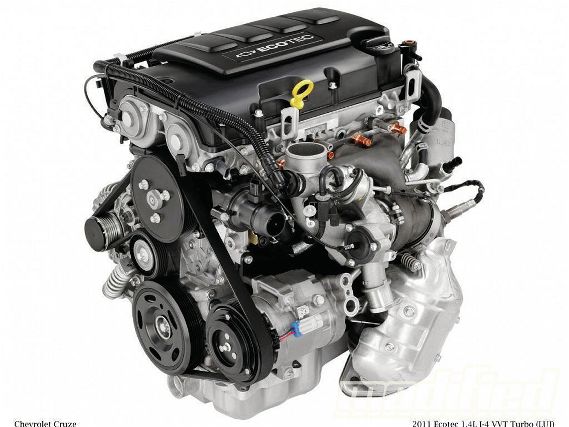 |
Forget batteries, the fuel efficiency revolution may just be powered by turbochargers if engines like Ford’s EcoBoost and GM’s 1.4-liter Ecotec are any indication.
|
Forget batteries, the fuel efficiency revolution may just be powered by turbochargers if engines like Ford’s EcoBoost and GM’s 1.4-liter Ecotec are any indication.
 Turbo Renaissance - Tech Talk
Turbo Renaissance - Tech Talk
OK, so the technology appears to be in place to make this turbocharger renaissance a far more successful strategy than it turned out to be in the ’80s, but how exactly do turbos improve fuel efficiency? Here at Modified we’re more accustomed to thinking of turbos as a power-adding device, rather than one that can be used to improve fuel economy. In fact, most of the turbo cars we play with get piss-poor fuel economy because they’ve been tuned for maximum power output and are being driven by hoons.
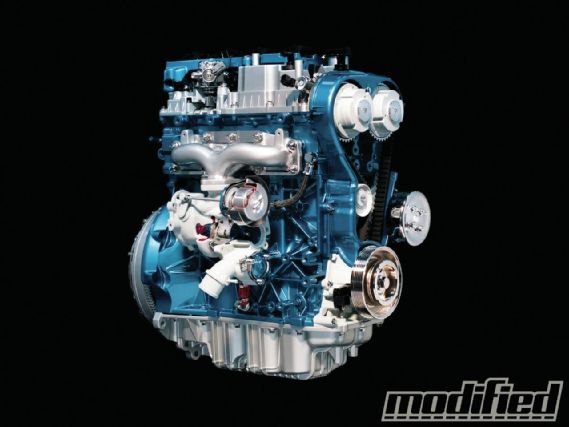 |
Turbo Renaissance - Tech Talk
|
Turbo Renaissance - Tech Talk
But out there in the real world, where people seem to care about fuel economy more than gross displays of horsepower, turbos can be used to reduce fuel consumption in two ways. The first is through improved thermal efficiency. Since a turbo system uses energy normally wasted out of the tailpipe to spin the turbo’s turbine, compress the aircharge and push the denser air into the combustion chamber, it’s easy to see how fuel is converted to a greater amount of work. With the right engine design and control, that extra work can be aimed at covering more miles while using less fuel. If you want to feel green about turbochargers, you could even describe them as a recycling system, given the way they reuse exhaust gases.
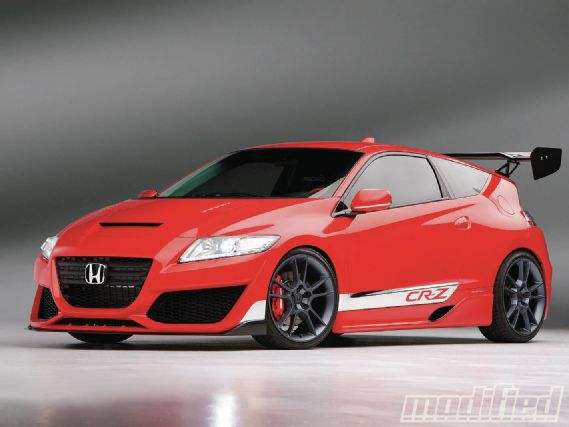 |
Honda promises to inject some more eco-friendly sportiness into the CR-Z with a turbocharged 1.6-liter engine in 2012.
|
Honda promises to inject some more eco-friendly sportiness into the CR-Z with a turbocharged 1.6-liter engine in 2012.
The other way turbochargers can be used to improve fuel efficiency is by delivering stronger low-rpm torque. With more low-end grunt, the driver is able to operate the engine more often at lower rpm, and lower engine speeds means reduced frictional losses within the engine (frictional losses increase rapidly as engine speed increases). Combined with sophisticated engine management, variable valve timing and a 6-speed transmission, and even very small-displacement turbocharged engines are able to accelerate small to midsized cars very efficiently at lower engine speeds, translating to improved fuel economy and less frictional wear and tear on the engine.
So for the ultimate in fuel-efficient engine design, it would appear that the best approach is a very small-displacement engine (which has low internal friction) that produces plenty of low-end power (via a turbocharger system) and is therefore able to operate primarily at low rpm (again, for lower frictional losses). Clearly, this is the model being used by many of the major automakers with their new compact and midsize cars, and I for one find this pretty exciting, not because of the fuel economy these engines deliver but because of the tuning potential turbocharged engines possess. It may not be like the ’90s when everyone was turning up the boost on their Supra or RX-7 with total disregard to fuel economy and tailpipe emissions, but we may just see a new breed of car enthusiast emerge who discovers just how much fun can be had with a little added boost pressure.
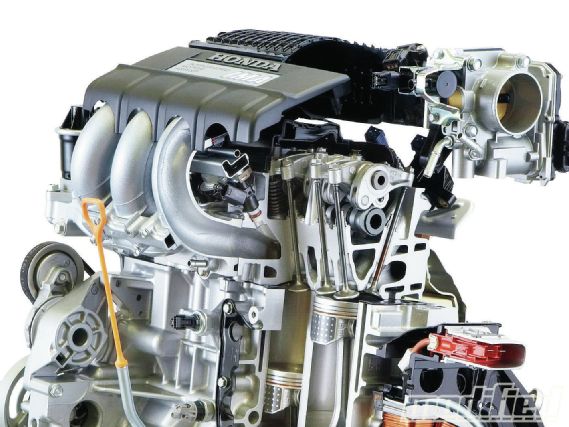 |
Turbo Renaissance - Tech Talk
|
Turbo Renaissance - Tech Talk
